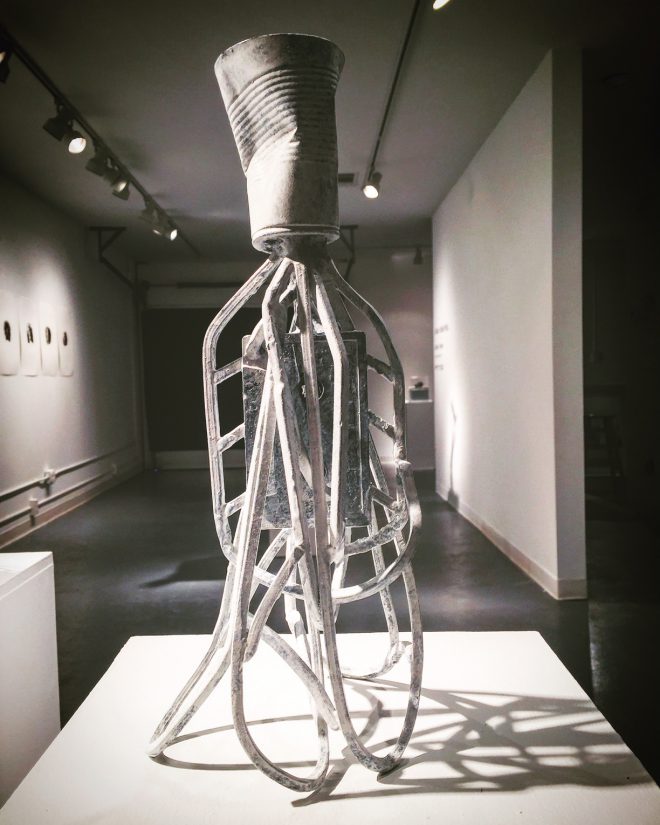Exhibition Pick: James L. Hayes
Ashley L. Voss looks at James L. Hayes’ current exhibition at UNO St. Claude Gallery, which takes a close look at the process of bronze sculptural casting.

Installation view of James L. Hayes’ Mixtape, 2015-16, at UNO St. Claude Gallery, New Orleans. Courtesy the artist.
James L. Hayes
UNO St. Claude Gallery
2429 St. Claude Avenue
August 13–September 4, 2016
After 20 years of working in production for other artists, both to gain experience and to support his own practice, James L. Hayes reflects on his early career experiences in “A Near Visible Past,” a solo exhibition at UNO St. Claude Gallery. Hayes pays homage to his time at AB Fine Art Foundry in London, which he revisits and references through video, sculptures, and lithograph prints. This show investigates the process of sculptural bronze casting, in which replicas are celebrated and originals are destroyed.
A video work, The Cellar, 2016, anchors the exhibition and gives context to the sculptural pieces in the adjacent room. Hayes’ film peeks into the eerie storage facility of the still-active foundry, which contains piles of neglected casts, discarded objects that seem to bring up unresolved emotions for Hayes. The camera roams the tomb-like environment, capturing the presence of these seemingly misplaced relics, which are only identifiable by scratched Sharpie notes on the casts themselves. The constant static of an industrial air compressor is a ghostly reminder that the dampness produced by the very machine aiding in the production of copies is responsible for the casts’ current state of decay. Hayes is intent on revealing the seemingly backwards philosophy that allows the original molds to be less carefully or securely stored than their esteemed copies, the final works of art.
Hayes’ playful response to this unsettling reversal is to combine the techniques and materials used to make multiples to create unique works too complicated to cast as reproductions. This anti-establishment attitude towards bronze sculpture is evident in The Thin End of the Wedge, 2015-16, in which thin intertwining rods support a radiant golden wedge, obscuring its origins as a doorstop from the foundry. The sculpture’s cake-stand-like base suggests a feeling of magnificence that is contradicted by the patina and the coloring of corrosion on the bronze. His committed investment in the traditional language and processes of sculpture evidences Hayes’ wit. For him, the value is in the negative and the unseen.



